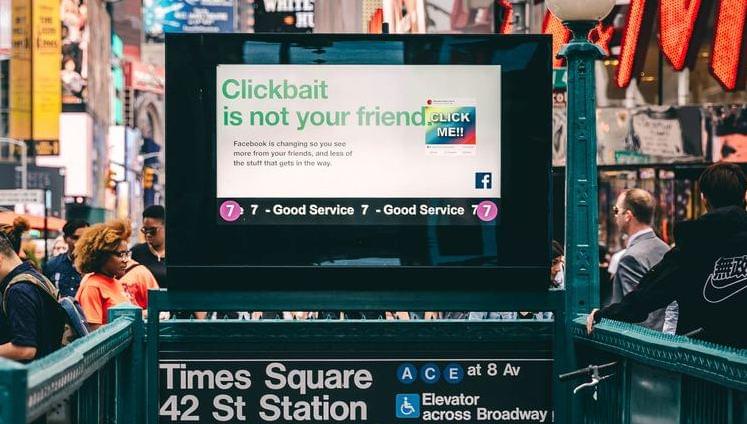[ This is a content summary only. Visit our website https://ift.tt/1b4YgHQ for full links, other content, and more! ]
by aqsqa qadir via Digital Information World
"Mr Branding" is a blog based on RSS for everything related to website branding and website design, it collects its posts from many sites in order to facilitate the updating to the latest technology.
To suggest any source, please contact me: Taha.baba@consultant.com

Want a place to chat about coding, design, the web, and technology at large with likeminded people?
Or perhaps you work remotely and need a community that can travel with you?
 We're opening our Discord to the public today. We wanted to create a casual place where we could chat about cool tech and getting stuff done, without the exhibitionism and divisive atmosphere of social media, but with that real-time sense of community.
We're opening our Discord to the public today. We wanted to create a casual place where we could chat about cool tech and getting stuff done, without the exhibitionism and divisive atmosphere of social media, but with that real-time sense of community.
Our server is a baby server, and there's a lot of work to be done, but for now we have rooms for all sorts of conversation. Whether you want to puzzle out web development issues or talk games, we've got you covered.
Sign up to our Discord and start chatting with SitePoint staff, members, and the wider developer community!
It's 100% free. Come on in and have chat with us!
The post Talk Tech with Us in Our New Discord Community appeared first on SitePoint.

Do you want more people to interact with your Facebook Messenger bot? Wondering how and where to promote your chatbot? In this article, you’ll discover how to encourage people to engage with your Messenger bot on Facebook. #1: Incentivize Messenger Bot Subscribers With Exclusive Access Messenger bots aren’t the most conspicuous mainstream marketing channels, so […]
The post 9 Ways to Increase Your Messenger Bot Engagement appeared first on Social Media Marketing | Social Media Examiner.
A landingpage for Port Insight, promoting their push brages track and trace solutions. Slick design with pure web animations.

This article was created in partnership with Proper Media. Thank you for supporting the partners who make SitePoint possible.
Recently, there have been countless articles and think pieces written about the decline of publishing. These articles often illustrate how difficult it is for publishers to monetize what they do to eke out a sustainable business model.
In reality, advertising revenue is down for independent publishers across the board. More people are using advanced ad blocking software, which is impacting the number of ads publishers can show. Plus there are two giant elephants in the room — Google and Facebook. These two entities combined account for almost 60% of the total advertising spend online. This duopoly uses third-party publisher content to bring in advertising revenue, but leaves very little revenue for the publishers themselves. For better or worse, they also have the scale to very effectively monetise their user base, which a smaller publisher just can’t compete with. Facebook, for example, has an average CPM of around $8 compared to an average CPM of $1 for third-party publishers. As the online advertising world evolves, publishers will face new obstacles to monetize their websites.
[caption id="attachment_172667" align="alignnone" width="470"] Source: eMarketer[/caption]
Source: eMarketer[/caption]
To overcome these difficulties, publishers have all tried different ways to generate revenue in this new landscape; the New York Times and many others have tried to sell premium subscriptions to their users by hiding their content behind paywalls. Another example of subscription-based revenue is Apple News+, which is an attempt to distribute some subscription revenue to publishers, albeit after Apple takes its healthy cut. However, consumers are still very unlikely to pay for content online. A study by Reuters Institute and Oxford University recently found that only 13% of people in the US pay for an ongoing news solution.
Paywalls have worked effectively for some publishers like the New York Times, where they have seen year-on-year revenue growth for their premium subscription product. But this is just not feasible for a lot of others, who are seeing a backlash from users to this system. In addition to being ineffective for many publishers, paywalls are inherently at odds with a publisher’s goals. Publishers want to produce content that educates and informs the largest number of people, which is the opposite of how a paywall operates. With these constraints around subscription-based website monetization, traditional display advertising has remained a large part of overall publisher revenue, including ours.
The simple fact is advertising has always been integral to an online publisher like us—it is how we here at SitePoint keep everything running and pay for our writers to produce interesting content that you come to read. We, like all other businesses, have to generate revenue. We’ve faced the same challenges over the years and the same struggle to strike a balance between generating revenue with advertising (in order to continue to produce a plethora of free, educational content), while creating a user experience that allows our readers to digest and enjoy that content without annoyance. We admittedly do not always get this balance right.
Currently, we’re teamed up with Proper Media as our programmatic revenue partner, in hopes of finding that balance. The way it works is that we leverage Proper’s header bidding solution to monetize the ad slots on our article pages. Working with Proper allows us to get the highest CPMs by creating competition for our inventory across all the top advertising demand available (e.g. Amazon’s A9, Google Adx, and AOL’s OATH). Additionally, they take care of the direct demand for ad sales. Gone are the days when advertisers bought large advertising blocks from individual publishers — nowadays, it is all run programmatically.
In short, Proper handles the monetization so we can focus on producing great content. They ensure that our ad revenue is as high as possible. They have continuous data-driven optimization and granular real-time reporting which ensure that we are always getting the best yield for our ad units. They also handle all of the receivables and deliver a consolidated payment that is on faster terms than all major exchanges, which really helps the cash flow of a small publisher like us.
The post The Precarious Nature of Running a Digital Publication in 2019 appeared first on SitePoint.